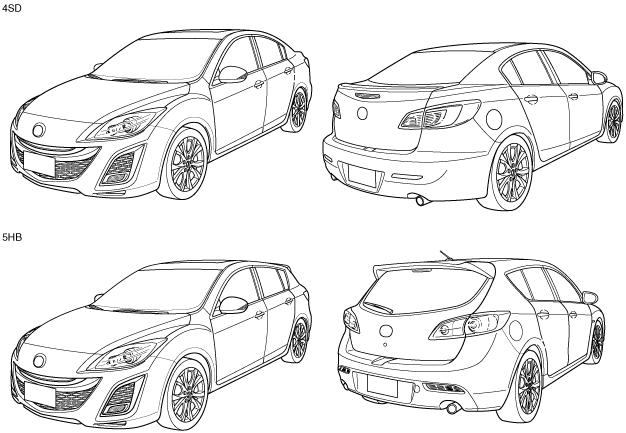• The adoption of the triple-H, strengthened frames on the floor, sides and roof areas provides enhanced protection.
• An immobilizer system has been adopted. This anti-theft device prevents the engine from being started unless the encrypted identification code, transmitted from a special electronic chip embedded in the key, corresponds with the identification code registered in the vehicle.
• World-class collision protection is provided due to the lightweight and highly rigid Mazda Advanced Impact-energy Distribution and Absorption System body.
• Curtain air bags have been adopted that deploy and cover the front and rear side windows to protect the heads of front and rear passengers.
• Side air bags that effectively protect the chest area have been adopted for the front seats.
• Pre-tensioner and load limiter mechanisms have been adopted for the front seat belts.
• Steering shaft with energy adsorbing mechanism adopted.
• An intrusion minimizing brake pedal has been adopted.
• Both ISOFIX and tether strap anchors are provided in the rear seat for child-seat fixing.
• Advanced keyless entry and push button start system has been adopted.
• Rear vehicle monitoring system adopted.
• Multi information display adopted.
• ESS (Emergency Stop signal System) adopted.
